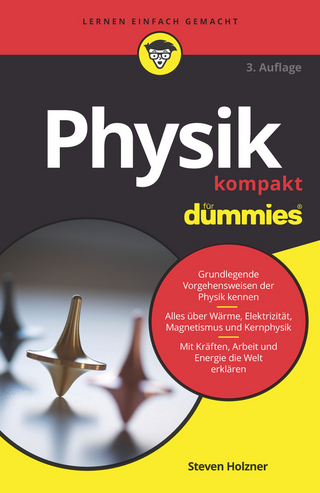
Nature of Mathematics
Brooks/Cole (Verlag)
978-1-133-94725-7 (ISBN)
Karl Smith is professor emeritus at Santa Rosa Junior College in Santa Rosa, California. He has written more than 36 mathematics textbooks. He firmly believes that students can learn mathematics if it is presented to them through the use of concrete examples designed to develop original thinking, abstraction and problem-solving skills. More than one million students have successful learned mathematics from Karl Smith's textbooks.
Prologue: Why Math? A Historical Overview.
1. THE NATURE OF PROBLEM SOLVING.
The Nature of Problem Solving. Problem Solving. Inductive and Deductive Reasoning. Scientific Notation and Estimation. Summary.
2. THE NATURE OF SETS.
Sets, Subsets, and Venn Diagrams. Operations with Sets. Applications of Sets. Finite and Infinite Sets. Summary.
3. THE NATURE OF LOGIC.
Deductive Reasoning. Truth Tables and the Conditional. Operators and Laws of Logic. The Nature of Proof. Problem Solving Using Logic. Logic Circuits (Optional). Summary.
4. THE NATURE OF NUMERATION SYSTEMS.
Early Numeration Systems. Hindu-Arabic Numeration System. Different Numeration Systems. Binary Numeration System. History of Calculating Devices (Optional). Summary.
5. THE NATURE OF NUMBERS.
Natural Numbers. Prime Numbers. Integers. Rational Numbers. Irrational Numbers. Groups, Fields, and Real Numbers. Discrete Mathematics. Cryptography (Optional). Summary.
6. THE NATURE OF ALGEBRA.
Polynomials. Factoring. Evaluation, Applications, and Spreadsheets. Equations. Inequalities. Algebra in Problem Solving. Ratios, Proportions, and Problem Solving.
Percents. Modeling Uncategorized Problems. Summary.
7. THE NATURE OF GEOMETRY.
Geometry. Polygons and Angles. Triangles. Similar Triangles. Right Triangle Trigonometry (Optional). Mathematics, Art, and Non-Euclidean Geometries (Optional Sections). Summary.
8. THE NATURE OF MEASUREMENT.
Perimeter. Area. Surface Area, Volume and Capacity. Miscellaneous Measurements (Optional). U.S.-Metric Conversions. Summary.
9. THE NATURE OF NETWORKS AND GRAPH THEORY.
Euler Circuits and Hamiltonian Cycles. Trees and Minimum Spanning Trees. Topology and Fractals. Guest Essay: “What Good Are Fractals?” . Summary.
10. THE NATURE OF GROWTH.
Exponential Equations. Logarithmic Equations. Applications of Growth and Decay. Summary.
11. THE NATURE OF SEQUENCES, SERIES, AND FINANCIAL MANAGEMENT.
Interest. Installment Buying. Sequences. Series. Annuities. Amortization. Summary of Financial Formulas. Summary.
12. THE NATURE OF COUNTING.
Permutations. Combinations. Counting without Counting. Rubik’s Cube and Instant Insanity (Optional). Summary.
13. THE NATURE OF PROBABILITY.
Introduction to Probability. Mathematical Expectation. Probability Models. Calculated Probabilities. GUEST ESSAY: "EXTRASENSORY PERCEPTION". "Bayes' Theorem". The
Binomial Distribution (Optional). Summary.
14. THE NATURE OF STATISTICS.
Frequency Distributions and Graphs. Descriptive Statistics. The Normal Curve. Correlation and Regression. Sampling (Optional). Summary.
15. THE NATURE OF GRAPHS AND FUNCTIONS.
Cartesian Coordinates and Graphing Lines. Graphing Half-Planes. Graphing Curves. Conic Sections.Functions. Summary.
16. THE NATURE OF MATHEMATICAL SYSTEMS.
Systems of Linear Equations. Problem Solving with Systems. Matrix Solution of a System of Equations. Inverse Matrices. Modeling with Linear Programming (Optional). Summary.
17. THE NATURE OF VOTING AND APPORTIONMENT.
Voting. Voting Dilemmas. Apportionment. Apportionment Flaws. Summary.
18. THE NATURE OF CALCULUS (OPTIONAL).
What Is Calculus? Limits. Derivatives. Integrals. Summary.
Epilogue: Why Not Math? Mathematics in the Natural Sciences, Social Sciences, and in the Humanities.
Appendices.
A. Glossary.
B. Selected Answers.
C. Index.
| Erscheint lt. Verlag | 1.1.2016 |
|---|---|
| Verlagsort | CA |
| Sprache | englisch |
| Maße | 224 x 46 mm |
| Gewicht | 2245 g |
| Themenwelt | Mathematik / Informatik ► Mathematik ► Algebra |
| Mathematik / Informatik ► Mathematik ► Angewandte Mathematik | |
| ISBN-10 | 1-133-94725-5 / 1133947255 |
| ISBN-13 | 978-1-133-94725-7 / 9781133947257 |
| Zustand | Neuware |
| Informationen gemäß Produktsicherheitsverordnung (GPSR) | |
| Haben Sie eine Frage zum Produkt? |
aus dem Bereich


